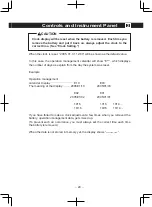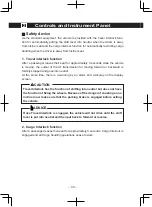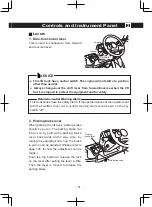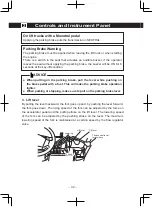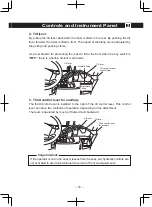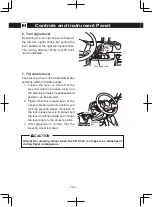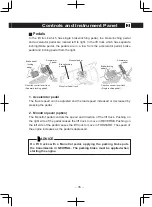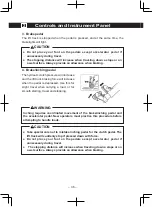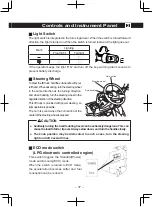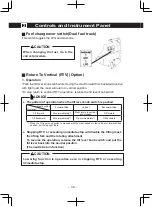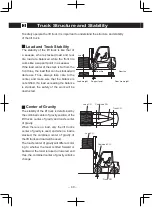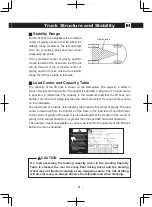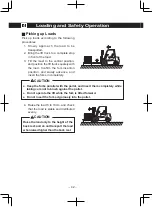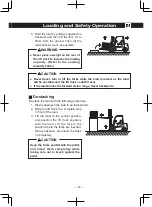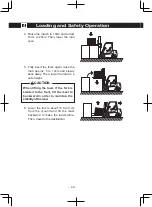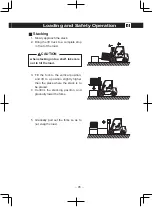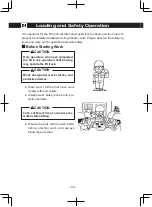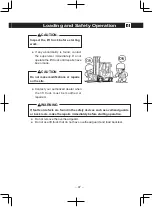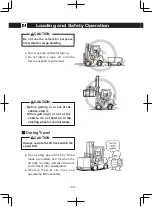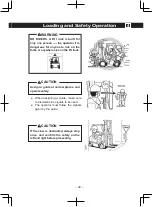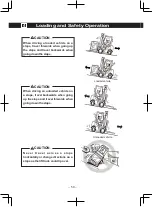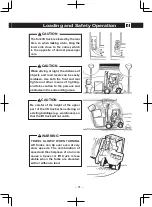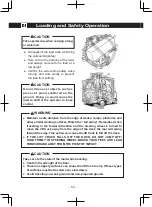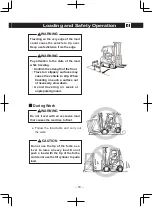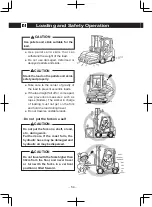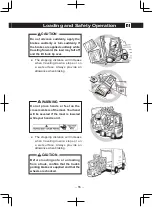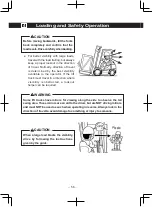
Truck Structure and Stability
3
─
41
─
Rear tire
Rear tire weight
Truck CG
Stability Range
For the lift truck to be stabilized, the combined
center of gravity position must be within the
stability range created by the left and right
front tire grounding point and rear wheel
suspension pin points.
If the combined center of gravity position
moves forward of the drive axle, the lift truck
will tip forward. If the combined center of
gravity position moves outside the stability
range, the lift truck will tip to that side.
Load Center and Capacity Table
The capacity of the lift truck is shown on the Nameplate. The capacity is listed in
terms of weight and load center. The weight is specified in kilograms. The load center
is specified in millimetres. The capacity is the maximum load that the lift truck can
handle. This load must weigh less than the maximum weight for a load center shown
on the nameplate.
The load center of a load is determined by the location of its center of gravity. The load
center is measured from the front face of the forks, or the load face of an attachment,
to the center of gravity of the load. It is also assumed that the location of the center of
gravity in the vertical direction is no greater than the specified horizontal dimension.
The operator must know whether or not a load is within the capacity of the lift truck
before the load is handled.
Stability range
If a load exceeding the loading capacity given in the Loading Capacity
Table is stacked, the rear tires may float during travel, and the steering
wheel may not function creating a very dangerous state. The risk of tilting
will also increase, so always observe the tolerable load when stacking.
CAUTION



